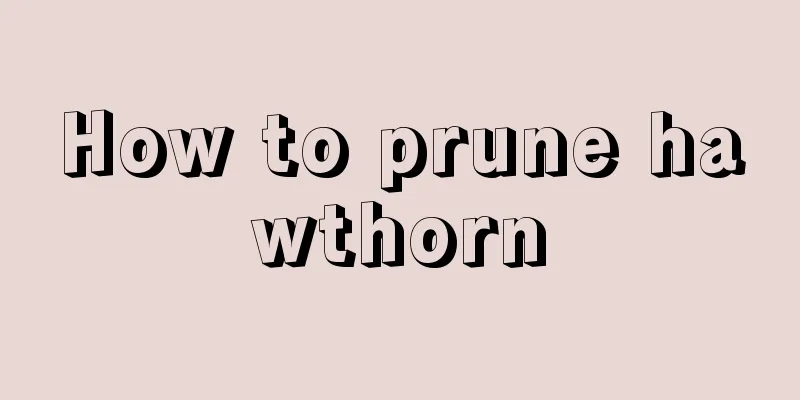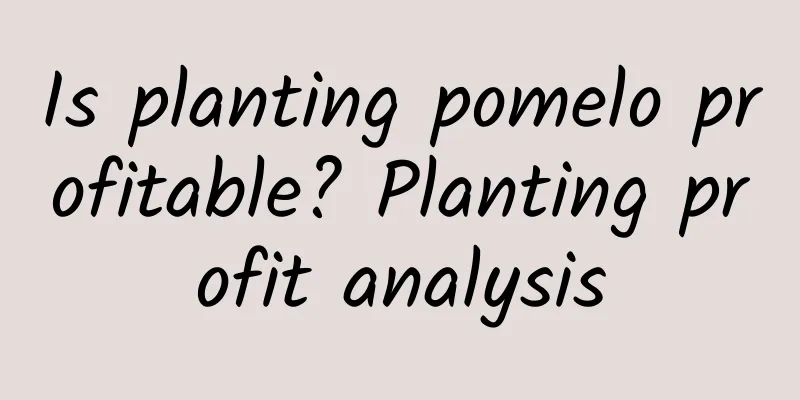How to prune hawthorn

Hawthorn tree pruningWhen pruning hawthorn, you can choose a sparse layered shape, a multi-branched closed heart shape, or a natural open heart shape. When shaping and pruning, attention should be paid to adjusting the shape of the tree with a skewed crown. Principles of hawthorn pruningWhen pruning young hawthorn trees, the principle is to cut lightly and leave more branches, and cut upright branches and competing branches short. In the second year, the strong ones are removed and the weak ones are kept or the growth is slowed down. The extension branches of the central trunk are pruned back, and the direction of the buds at the cut is opposite to that of the previous year. This practice can correct the skewing of the young trees. The extension branches of the main and side branches should be cut short, leaving the outer buds to open the angle. During the initial fruiting period of hawthorn, the extension branches of the main branches at all levels can be shortened to maintain the subordinate relationship and balance the tree vigor. Thin out crowded branches, overcrowded branches, or cut them back to transform them into large fruiting branches, and thin out overcrowded branches. During the peak fruit-bearing period of hawthorn, attention should be paid to ventilation and maintaining good light conditions. At this time, it is necessary to short-cut the new branches outside the crown, strengthen the growth of nutrient branches, and back-prune to rejuvenate the fruiting branches. In addition, overlapping branches, overly dense branches, crossed branches, and diseased and insect-infested branches should be pruned off. The tips of large branches are drooping and can be slightly pruned back, leaving lateral or oblique upward branches. When pruning the fruiting branches of hawthorn, the weak ones should be cut off, leaving the strong ones, and the thin ones should be removed, leaving the strong ones, to adjust the density of the branch groups. Prune the strong branches within the branch group as reserve branches to prevent the phenomenon of alternate bearing years. Reasonable use can be made of the overgrown branches, which can be cultivated into fruiting branch groups through pruning and pinching in summer. For hawthorn trees over 10 years old, thinning should be the main method, and diseased and insect-infested branches, dead branches, and overly dense branches should be cut off to keep the crown symmetrical and the branches appropriately sparse to facilitate ventilation and light transmission. |
<<: How to propagate Trachelospermum jasminoides
>>: How to grow daffodils in sand
Recommend
Take advantage of this season and plant flowers all over the walls of your home!
ivy (Author: bossanbaby Source: Ivy Bar) Tips for...
Is it okay to use rooting powder to water flowers?
Rooting powder is a commonly used chemical agent....
How often should I water my ivy?
How often to water For plants like ivy, there is ...
Is it poisonous to place evergreen indoors?
1. Is it poisonous? The sap in the leaves and ste...
Tremella's growing environment and local conditions
Tremella growth environment and conditions Tremel...
High-yield cultivation techniques of autumn cucumber
Cucumber is an annual climbing or creeping herb o...
The fallen leaves fell into the soil and sprouted a bunch of buds. It was a waste of money to buy 10 years of flowers!
Aloe Vera Aloe vera leaves are plump and rich in ...
How to plant Hypericum
Growth habit Hypericum is suitable for growing in...
How to grow lotus bamboo in water
1. Breeding conditions 1. Water quality Hydroponi...
Purple cabbage planting time and method
Purple cabbage planting time Purple cabbage is ge...
If you don’t grow this kind of flower now, your summer will be wasted and it will be too late to regret!
Why grow chrysanthemums? The flowering period of ...
What to do if the leaves of the fairy turn yellow
The reason why leaves turn yellow The reason why ...
What are the legends and meanings of the ground lotus?
1. The flower language and meaning of ground lotu...
Does Impatiens prefer shade or sun?
Does Impatiens prefer shade or sun? Impatiens is ...
How to grow the Snowblowing Pine Brocade at home (cultivation methods and precautions of the succulent pine brocade)
Succulent Snow Blowing Pine Brocade (such as) 1. ...









